PgAdmin4 is a easy to use web interface for managing PostgreSQL databases. It can be used on multiple platforms such as Linux, Windows and Mac OS X. In pgAdmin 4 there is migration from bootstrap 3 to bootstrap 4.
In this tutorial we are going to install pgAdmin 4 on a CentOS 7 system.
Note: This tutorial assumes that you already have PostgreSQL 9.2 or above installed on your CentOS 7. For instructions how to install it, you can follow our guide: How to install PostgreSQL 10 on CentOS and Fedora.
How to Install pgAdmin 4 in CentOS 7
This step should have been completed upon the installation of PostgreSQL, but if you haven’t, you can complete it with:
# yum -y install https://download.postgresql.org/pub/repos/yum/12/redhat/rhel-7-x86_64/pgdg-redhat-repo-latest.noarch.rpm

Now you are ready to install pgAdmin with:
# yum -y install pgadmin4
During the installation, due to dependencies, the following two will be installed as well – pgadmin4-web and httpd web server.
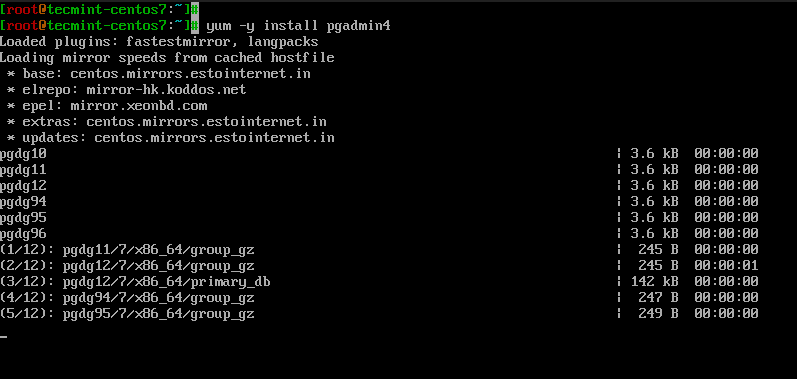
How to Configure pgAdmin 4 in CentOS 7
There are few minor configuration changes that need to be done to have pgAdmin4 running. First we will rename the sample conf file from pgadmin4.conf.sample to pgadmin4.conf:
# mv /etc/httpd/conf.d/pgadmin4.conf.sample /etc/httpd/conf.d/pgadmin4.conf # vi /etc/httpd/conf.d/pgadmin4.conf
Adjust the file so it looks like this:
<VirtualHost *:80>
LoadModule wsgi_module modules/mod_wsgi.so
WSGIDaemonProcess pgadmin processes=1 threads=25
WSGIScriptAlias /pgadmin4 /usr/lib/python2.7/site-packages/pgadmin4-web/pgAdmin4.wsgi
<Directory /usr/lib/python2.7/site-packages/pgadmin4-web/>
WSGIProcessGroup pgadmin
WSGIApplicationGroup %{GLOBAL}
<IfModule mod_authz_core.c>
# Apache 2.4
Require all granted
</IfModule>
<IfModule !mod_authz_core.c>
# Apache 2.2
Order Deny,Allow
Deny from All
Allow from 127.0.0.1
Allow from ::1
</IfModule>
</Directory>
</VirtualHost>
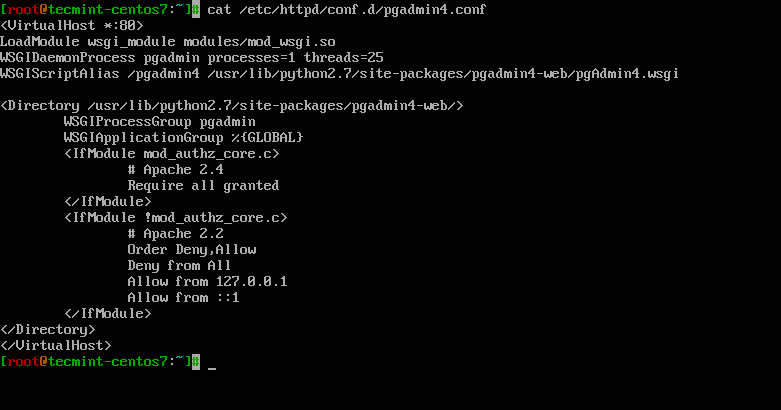
Next we will create logs and lib directories for pgAdmin4 and set their ownership:
# mkdir -p /var/lib/pgadmin4/ # mkdir -p /var/log/pgadmin4/ # chown -R apache:apache /var/lib/pgadmin4 # chown -R apache:apache /var/log/pgadmin4

And then we can extend the contents of our config_distro.py.
# vi /usr/lib/python2.7/site-packages/pgadmin4-web/config_distro.py
And add the following lines:
LOG_FILE = '/var/log/pgadmin4/pgadmin4.log' SQLITE_PATH = '/var/lib/pgadmin4/pgadmin4.db' SESSION_DB_PATH = '/var/lib/pgadmin4/sessions' STORAGE_DIR = '/var/lib/pgadmin4/storage'

Finally we will create our user account, with which we will authenticate in the web interface. To do this, run:
# python /usr/lib/python2.7/site-packages/pgadmin4-web/setup.py

Now you can access your server’s http://ip-address/pgadmin4 or http://localhost/pgadmin4 to reach the pgAdmin4 interface:
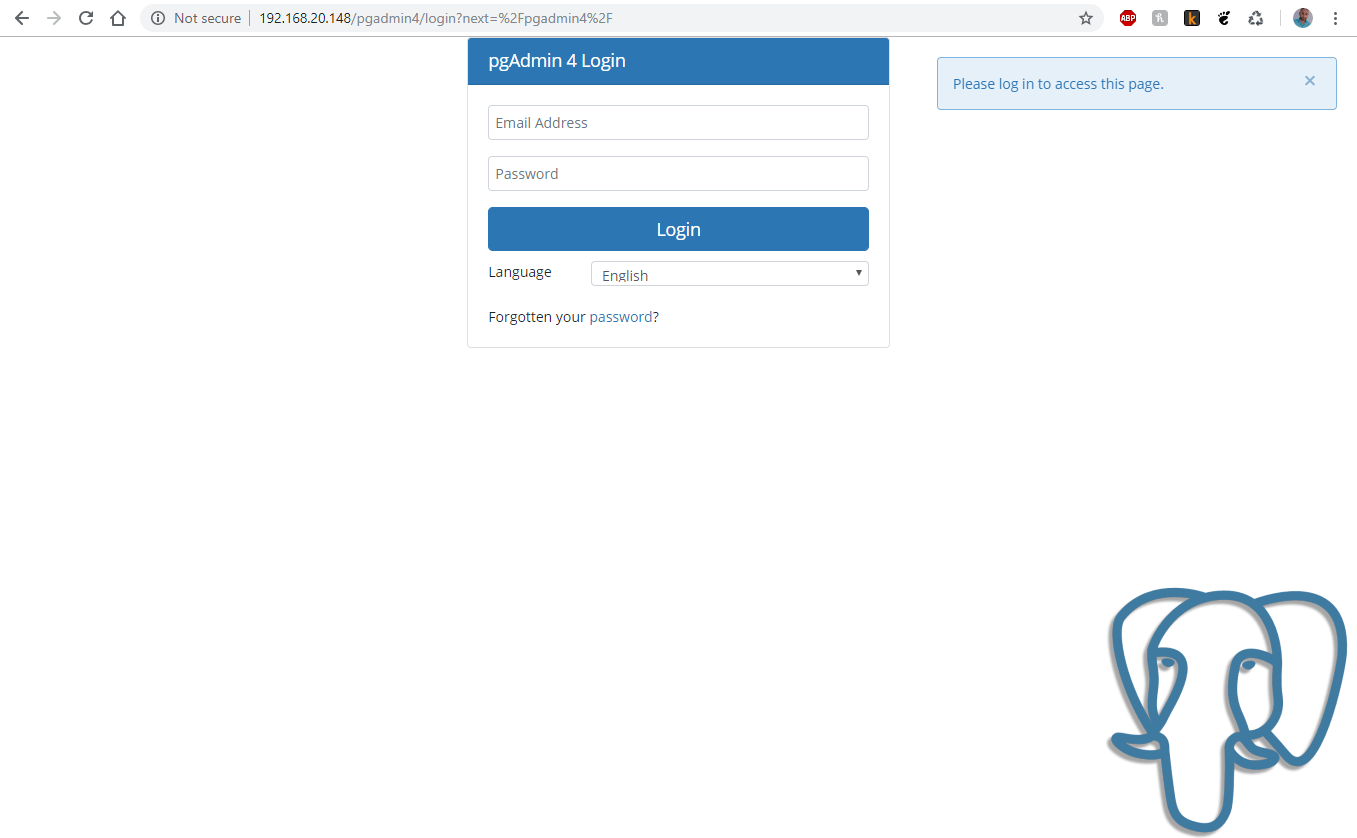
If you receive 403 error while accessing PgAdmin4 interface, you need to set the correct SELinux context on the following files.
# chcon -t httpd_sys_rw_content_t /var/log/pgadmin4 -R # chcon -t httpd_sys_rw_content_t /var/lib/pgadmin4 -R
To authenticate, use the email address and password that you have used earlier. Once authenticate, you should see the pgAdmin4 interface:
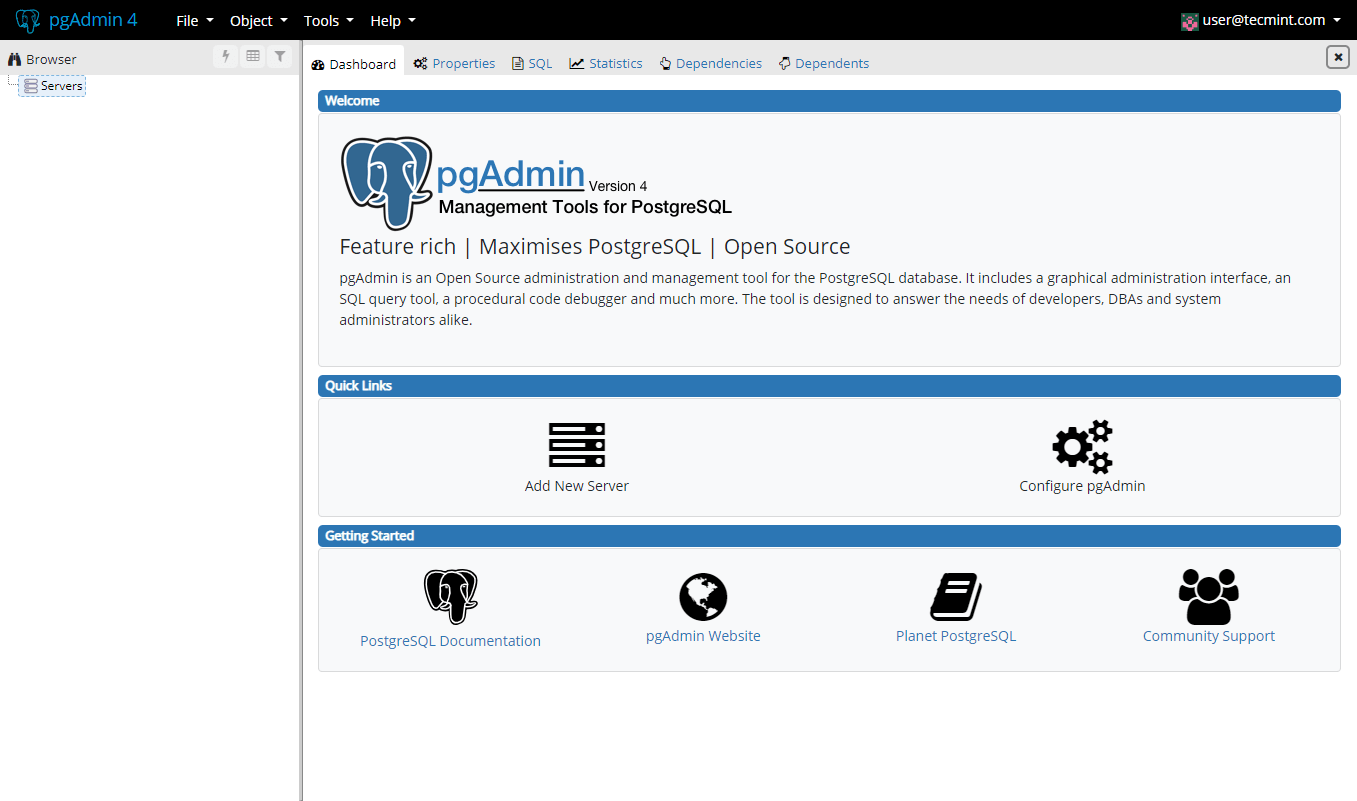
At your first login, you will need to add a new server to manage. Click on “Add New Server”. You will need to configure the PostgresQL connection. In the first tab “General”, enter the following settings:
- Name – give name of the server you are configuring.
- Comment – leave a comment to give description of the instance.
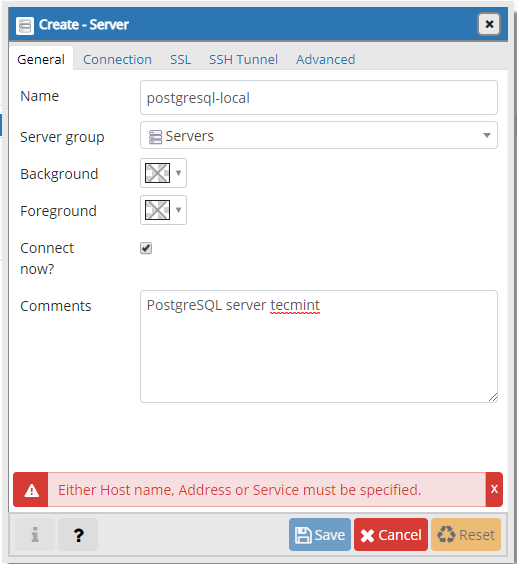
The second tab “Connection” is more important one, as you will have to enter:
- Host – host/IP address of the PostgreSQL instance.
- Port – default port is 5432.
- Maintenance database – this should be postgres.
- Username – the username which will be connecting. You can use postgres user.
- Password – password for the above user.
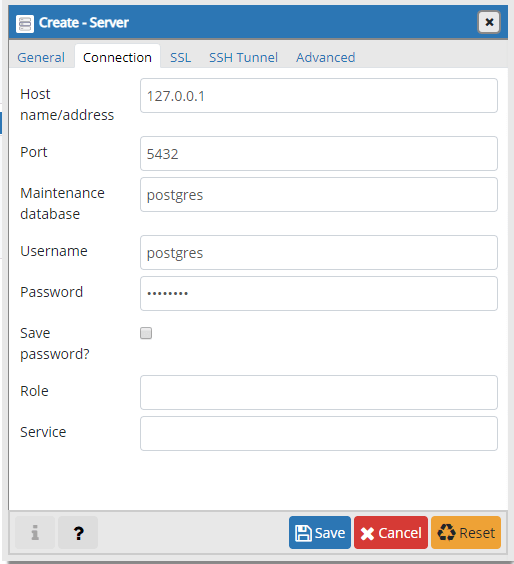
When you have filled everything, Save the changes. If the connection was successful, you should see the following page:
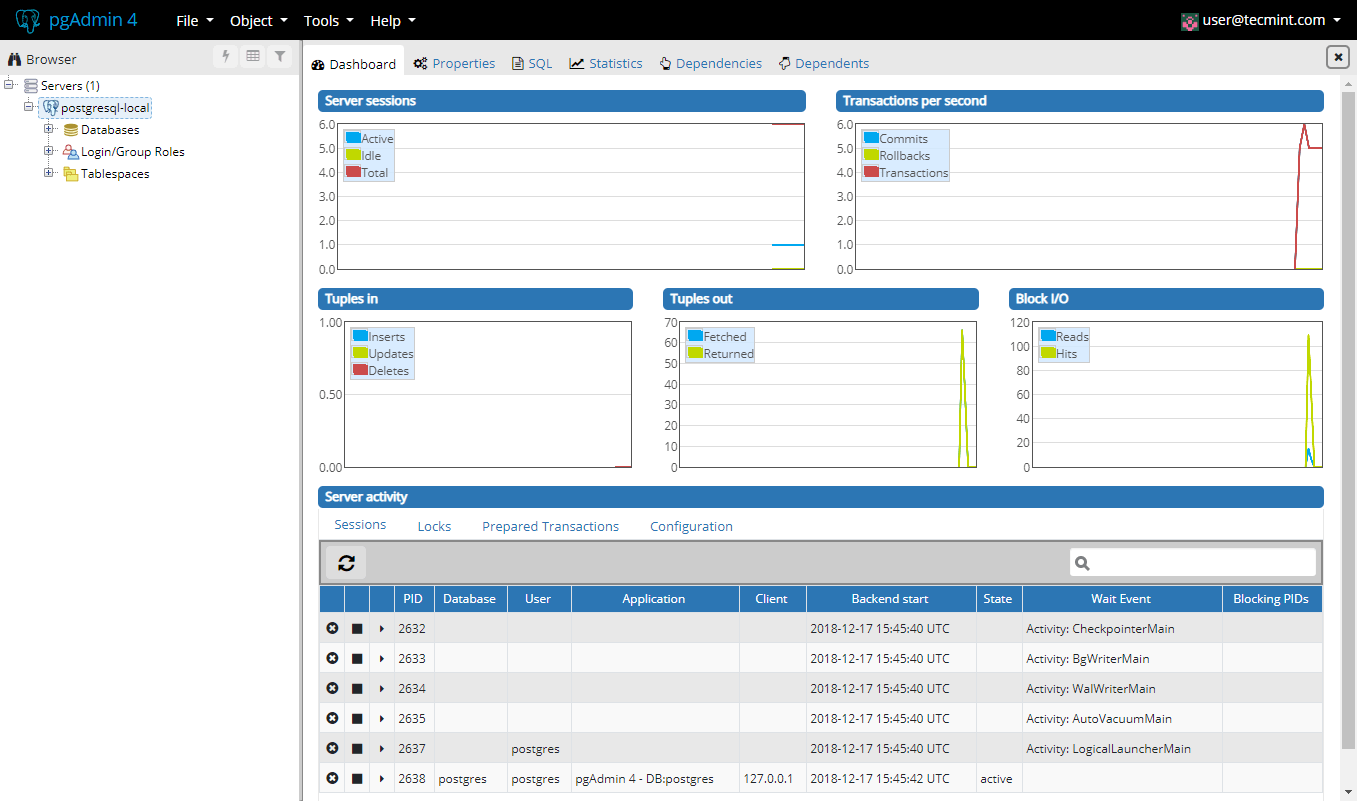
This was it. Your pgAdmin4 installation is complete and you can start managing your PostgreSQL database.







Cannot install pgadmin4 on centos 7.8.2003. libpq.so.5 must be updated to version 12.4, but the system version of 9.2.24 it is needed by the package redhat-lsb-core. It is suicide to update libpq.so.5.
greetings,
Seems that pgadmin4 moved to python 3.6.
OK, and now we have ver 4.17 HOW can we install it on centos 7 now? running python
/usr/lib/python2.7/site-packages/pgadmin4-web/setup.pyis stoping by error. SO?? maybe it is time to change manual here?The post should come with a warning or be taken down, lots of wasted hours, not acceptable, have the decency to take it down.
@Greg,
I have just tested on my CentOS 7 system, and the given instructions worked without any errors…
Indeed I couldn’t get it to work until I run:
# python /usr/lib/python2.7/site-packages/pgadmin4-web/pgAdmin4.pyand connect on URL http://127.0.0.1:5050/
thanks for the comments!
These instructions are incomplete. You need to run:
# python /usr/lib/python2.7/site-packages/pgadmin4-web/pgAdmin4.py…to start the app!
Also, the default url it start on is: http://127.0.0.1:5050 (not what you’ve posted here)
It’s unfortunate that one has to spend so much so much time troubleshooting due to incorrect instructions posted here !